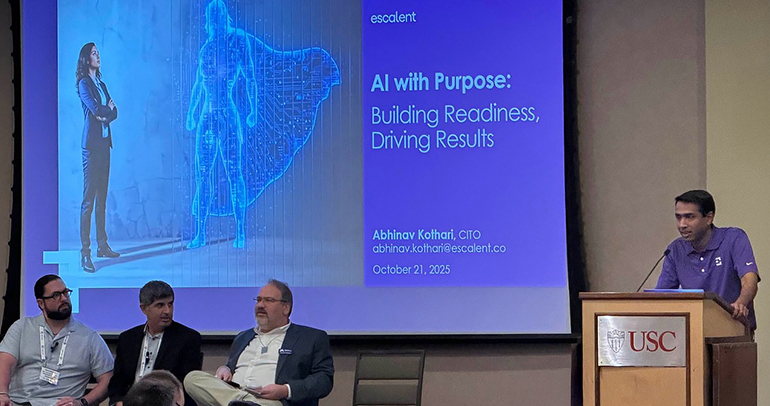
While organizations embrace innovation as critical to their long-term success, they are also often stymied by how to develop such innovations. The pressure and risks associated with developing groundbreaking products and services can be enormous and overwhelming. But innovations don’t have to be created from scratch or in a vacuum. Current products and services may meet basic customer needs, but sometimes they don’t fully address higher-level customer objectives (or “jobs to be done”). If firms can identify these broader objectives and “break the mold” with new and reimagined products and services, these innovations can sometimes be so successful that they transform their respective industries.
The proof?
Several years ago, I was in the field interviewing respondents on a wide range of topics. At one point during the interviews, I asked a question about the respondent’s interest in electric vehicles. The most common response was something along the lines of, “No, I am not really that interested in EVs. But a Tesla—I could really get interested in a Tesla!”
After further discussion, it became clear that respondents equated EVs with small, plain, compact cars (think Nissan Leaf or Honda Fit), whereas they thought of Tesla as something different and “cool.” It was an interesting example of how firms can introduce game-changing products by breaking the mold in new and different ways.
Other manufacturers thought that the key to EV success was designing compact vehicles with maximum efficiency as the goal. But Tesla understood that style was still one of the most important considerations in car shoppers’ minds. Tesla’s innovation was that it not only developed advanced EV technology, but also packaged it in a beautiful, stylish vehicle that didn’t look like a typical EV. Tesla broke the mold of its vehicle category by taking a page from the old (i.e., developing an appealing, stylish design) and making it new (i.e., by wrapping this design around its innovative EV technology).
Given how integrated Zoom is in our business lives today, it may be hard to believe that Zoom is a little over 10 years old. Prior to Zoom’s popularity, businesspeople tended to rely on voice conferencing or in-person meetings to communicate with colleagues and clients. Voice conferencing is convenient and inexpensive but doesn’t provide the intimacy and nuance of communicating in-person (e.g., how participants look, feel and react) or the ability to review documents. While meeting in-person resolves these problems, it also means that individuals must take the time, effort and expense to get themselves to a common space, whether that is by commuting to a company office or flying across country to meet with a client.
With the introduction of Zoom, users were able to benefit from a system that was as easy to use as audio conferencing but also provided greater personal connection and work productivity through video communication and features like document sharing. This became obvious when the pandemic hit and individuals and businesses were suddenly forced to continue operations while working primarily from home. Using Zoom, businesses realized that they didn’t always need to invest the time and expense of meeting clients in person. In turn, employees realized that they enjoyed working from home and eliminating their commute, while firms discovered they didn’t require as much office space when employees were only occasionally coming into the office. In summary, Zoom’s success was not just because it developed a better communication tool but also because it dramatically changed business operations.
While Uber is now a major transportation player, it is also still a young firm that has only been in business for 15 years. At the time that Uber launched, it wasn’t obvious there was a need for an additional “cars for hire” service. Taxi and limousine services had existed for years and Uber wasn’t offering anything radically different in terms of basic transportation (i.e., it was still designed to get individuals from point A to point B).
But Uber broke the mold of transportation services in different ways. Because of various governmental controls and constraints, the country’s taxi and limousine companies have typically been regionally organized and operated. In contrast, after establishing a network of contract drivers throughout the country, Uber has become a transportation company with a national footprint. Uber’s mobile app also enables customers to quickly and easily request rides on-demand, regardless of where they are located. As a result, customers no longer have to go searching for a taxi but can rely on Uber drivers to find them instead. Because the mobile app and national network of contracted drivers are integrated, customers can use the same app in the same way regardless of what city or region they happen to be in.
All of this means that Uber has become much more than just “another taxi service”. By rethinking what customers want from transportation services, Uber has changed the transportation paradigm from a local/regional model to a national, on-demand model.
These three business examples are proof that tomorrow’s innovations can begin with looking at today’s established products and services in a new light. By taking a step back and determining whether the current offerings are really optimized to achieve all customers’ objectives or “jobs to be done,” firms can identify new ways to innovate. The opportunity for innovation comes when firms can widen their lens and determine whether there is a larger problem or opportunity that is not currently being addressed by today’s products and services.
Escalent is prepared to help you explore these kinds of innovation opportunities, whether it’s through secondary research to understand market trends, primary research to understand your customers’ needs or “jobs to be done,” or data analytics to assist in identifying winning concepts and feature sets. Working in partnership with your firm, Escalent stands ready to provide you with the insights and direction you need to “break the mold” and establish new innovations within your industry.
Want to learn more? Let’s connect.








